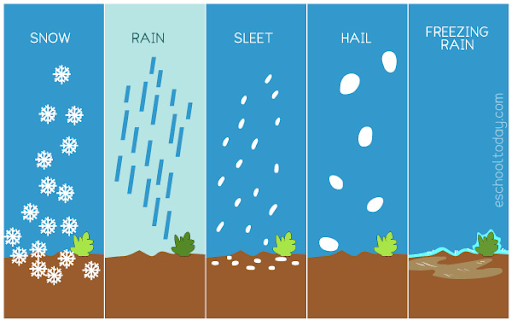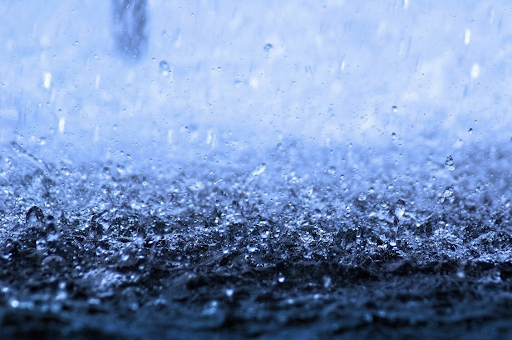As you may know, precipitation is one of the most primary elements of the weather besides temperature, wind, humidity, and more. Do you know that precipitation can take different forms rather than just rainfall? Of course, it's clear that rainfall might be something a lot of us think of first when it comes to precipitation. Along with rainfall, there are other types of precipitation and right now, we are going to learn about different types of precipitation and how they form. Let’s see what they are!
Related topic:
Precipitation is one of the most primary elements of the weather
What is precipitation?
Precipitation is water in all different forms falling on the ground as a result of gravity. There are various forms of precipitation, including rain, snow, sleet, hail, and more. Of course, different types of precipitation form differently, depending on various factors such as temperature in the clouds, the temperature of the air, and more. About the formation of precipitation, it is basically the result of evaporation and condensation. Without both of them, it will not be possible for any kinds of precipitation to occur at all. Next, let's move on to learn about different types of precipitation and how they form.
Different types of precipitation and how they form: Here are the most common ones
As mentioned above, precipitation can take several different forms. While certain precipitation types are associated with summer weather conditions, some are associated with winter weather, and some others aren’t necessarily seasonal-relative.
Rainfall
Needless to say, rain is the most common precipitation form. Rain consists of water droplets falling down to the surface of Earth when they're too heavy to stay suspended in the clouds.
Rain occurs in all seasons, primarily depending on the temperature in both the clouds and in the atmosphere, as well as the temperature at the ground level. About freezing rain, this phenomenon appears when water droplets pass through a layer of cold air before hitting the Earth's surface and then freezing upon contact.

Precipitation can take several different forms
Snow
Another very common type of precipitation is snow. But not like rain, snow falls down in form of ice crystals instead of water droplets. Water vapor freezes into ice crystals in cloud levels. Once these ice crystals are heavy enough, they fall to the ground in flakes as a result of gravity.
Snow forms when the temperature in the clouds is less than minus 32 degrees Fahrenheit (below freezing point). If temperatures on the ground are higher than the freezing point, snow will still occur, but will also melt rapidly when hitting the ground.
Sleet and hail
Sleet and hail seem quite similar but they are 2 different forms of precipitation. While hail is commonly associated with summer weather conditions and thunderstorms, sleet is the opposite when it's more likely to appear during winter-like weather. Sleet is partly frozen rain consisting of ice pellets, often mixed with rain or snow, while hair is basically solid ice balls.
Other kinds of precipitation
In addition to different types of precipitation and how they form mentioned above, there are still various precipitation kinds such as graupel, fog drip, and more.
Sometimes, different forms of precipitation appear at the same time. During harsh winter storms, for instance, it is not rare for sleet and rain to fall at a time. On the other hand, there are also times that precipitation does not fall down to the ground at all. Do you know about Virga? In fact, virga is also a type of precipitation beginning to fall from a cloud but ... evaporating before it reaches the Earth's surface.
Conclusion
These are some basic things to know about different types of precipitation and how they form that we want to introduce to you via this writing. Hope you enjoyed this post and found it useful and interesting.

Nhận xét
Đăng nhận xét